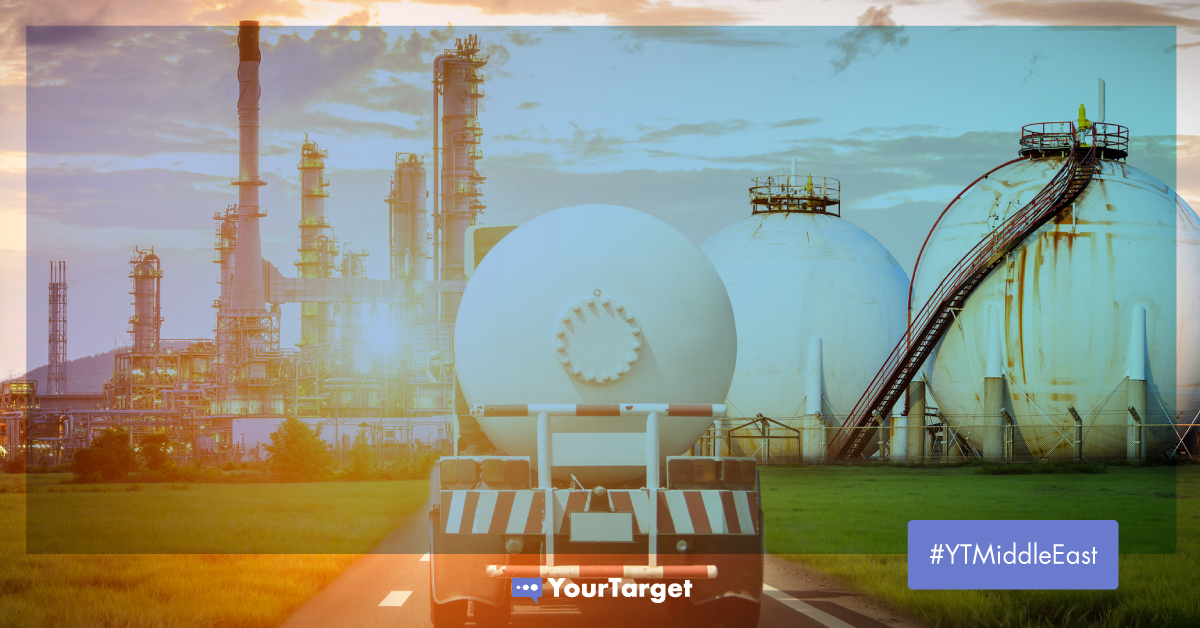The industry has begun to face the crippling effect due to the adverse environmental effects of fossil fuels and coming under scrutiny by different stakeholders. There is a prominent shift in energy demand from traditional resources to cleaner energy sources. Hence, the oil and gas sector’s social and financial health is in turmoil.
IEA (International Energy Agency) predicted that the oil market would slide by 4%, and the gas market would spiral up by a minimum of 3% by 2040 concerning 2017 figures.
Under the present circumstances, the enterprises positioned anywhere in the oil and gas energy chain, be it upstream or downstream, are anticipated to drive a slow but steady shift in their entire business model to keep pace with the evolving environment. The only strategic asset to hold on to in these changing times is customers and their loyalty towards a brand.

This is where digital marketing plays its role. Digital marketing is transforming the way businesses function today, and this is no less relevant for the oil and gas industry.
Transformative technologies in gas and oil convey one of the most impressive examples of Industry 4.0.
Digitization can eventually improve companies’ efficiency, safety, and profitability within each production stage (upstream, midstream, and downstream).
What are Transformative Technologies?
Transformative technologies intersect with each process phase for oil and gas, including upstream, midstream, and downstream functions.

Upstream operations handle both offshore and onshore extraction. Transformative technologies in this phase emphasize sustainability and workforce security. Companies can utilize virtual reality software and automated safety systems to enhance exploration and production.
Data analytics improves these capabilities so that companies achieve more precision during initial production.
Companies need improved logistics and storage facilities for midstream operations for raw materials. Transformative technologies for midstream production implies preparing pipelines with AI technology and quality secured automation tools to lessen waste and risks.
Gas and oil companies purify their products for downstream production distributors, resellers, and end-users. Transformative technologies can enhance customer relationships and consumer marketing for a longer customer lifecycle and positive brand impact.
Components to Digital Transformation in Oil and Gas
Digitally transformed companies hold a sizable advantage over industry competitors. More notably, businesses that stick to traditional strategies won’t be able to hold their market share against the backdrop of new players in the industry evolving at a rapid pace.
The component listed below depicts the need for oil and gas companies to adopt digital platforms:
1. Document Management Systems (DMS)
Specifically, in industrial markets, the reason behind bottlenecks is the lack of centralized information management systems. Dependence on physical paper paths leaves room for notable waste, poor communication, uninformed decision-making, and mutable record keeping.

By contrast, cloud storage on reliable servers decreases waste, paper, and mismanagement at every level. Holding a single medium for information storage, organization, and reporting empowers executives, managers, and specialists to do their job with more efficiency.
2. Energy Trade and Risk Management (ETRM)
Gas and oil operations are impossible without the support of investors and commodity traders. That said, the energy sector tends to be a volatile commodity in the eyes of monetary advisors. Artificial intelligence and machine learning let fintech developers anticipate volatility, diversify portfolios, and reduce risk.
Digital improvements in ETRM boost investor confidence and attract new investors to the energy sector. The following influx of capital empowers gas and oil firms to enhance upstream, midstream, and downstream activities.
3. Enterprise Resource Planning (ERP)
Enterprise resource planning lets oil and gas firms achieve accurate end-to-end processes. Poor software integration across business verticals cause decision-makers to doubt the very technology that is fated to increase production, distribution, and sales dramatically.
Any digitization initiative for gas and oil enterprises must include carefully designed ERP initiatives. Doing so solidifies technological achievements, lessens employee learning curves, and improves overall efficiency.
ERP is more critical than ever now that more companies manage remote workforces. Home office workers can synchronously and asynchronously work on group projects and direct team fellows in the field.
4. Customer Relationship Management (CRM)
Customer relationship management is more than CRM software, though customer data is critical for the customer relationship process. In the gas and oil sector, customer relationship management directs to what is comprehended as commercial excellence programs.
With the same tenacity that operators deploy technology to increase exploration, transportation, extraction, and refining efficiency, energy distributors and sales associates strive to trim the buyer’s journey and improve touchpoint frequency.
Customer analytics enhance marketing actions and help agencies target the best clients and traders. Segmented targeting, in turn, improves customer knowledge among executives, who may then execute more effective GAP research to refine corporate values and decrease waste.
Oilman Magazine noted that industrial companies focusing on commercial excellence could raise revenues by 25% simply because executives better comprehend their finest customers and segment marketing and sales tactics towards those customers.
5. Artificial Intelligence (AI) and Machine Learning (ML)
Thanks to data analytics and machine learning technology, artificial intelligence (AI) can automate numerous tasks in each gas and oil production phase. Automation decreases errors and allows human employees to handle more nuanced processes.
6. Digitizing Traditional Systems
For nearly 200 years, the energy sector, particularly oil and gas, has evolved to more efficient and eco-friendly techniques for powering modern life. But hurdles arise when new technologies depend on old technologies. Rebuilding entire infrastructures can be financially debilitating for many businesses.
Careful digital transformation implies approaching analog and mechanical systems carefully. These traditional systems may or may not need a complete replacement, depending on the accessibility of digital components that can extend the life of non-digital components.
How can Digital Marketing help you achieve business goals?
It can be alluring to launch a new website, open a social media account, and start spending money on Google ads as soon as you get to know your competitors are using these tactics. While those tactics will come in handy, you must first identify the critical goals you are trying to accomplish with your oil and gas digital marketing actions.
We recommend splitting your achievable goals into four key areas:

- Visibility: This goal is about getting more eyes on your brand, i.e., increasing brand awareness. Increasing visibility is about ensuring your audience understands who you are and where you are.
- Engagement: This purpose is about getting your audience to participate in your marketing actions, such as clicking on a link, reading a blog, or signing up for your newsletter.
- Conversion: Most businesses want this to be their first goal because it’s about getting your potential clients to sign on and become customers. However, you can’t get conversions without first gaining visibility and engagement.
- Retention: This goal is critical in many sectors, especially oil and gas. Here, you want to convert your current customers into repeat customers.
When you first start your digital transformation in marketing and sales, you’ll need to start with one goal, usually visibility. Master that, and then move on to the next. Achieving all four goals at once may result in complex strategies and messaging that does not resonate with your audience. YourTarget can be your best mate to help you achieve all the above-listed goals for your oil and gas enterprise.
What Impact can Digital Marketing Bring to Businesses in the Oil and Gas Industry?
Till now, the oil and gas industry has lagged behind others in adopting new digital marketing trends – be it social media marketing, content management, or the use of simple analytical tools. Statistics indicate that oil & gas firms usually have a minimal marketing budget (a mere 7 per cent).
1. Aids Industry Alliance
The oil and Gas Industry does not work confined to localized geography; instead, due to the capital intensity of the industry as well as energy imbalance between markets, it is distributed over the widespread market. The product has immense demand globally, and companies hold international clients. This demands relationship building with global clients, and Social media delivers the right medium to expand the company’s reach globally without any restrictions. Many companies use social media platforms not to promote their brand directly but to interact with clients through sharing knowledge, industry discussion and audience engagement.
2. Helps in Recruitment
Today, the younger generation is very vocal about their views, especially on social media. This makes social media an excellent medium for headhunting and recruiting young talent. A strong presence over social media platforms like LinkedIn make the company a preferable employer amongst the potent candidates.
3. Acts as an Educational Medium
Presently, when all companies in the Oil and Gas energy chain are questionable towards the sustainability of their business, Social media platforms could be leveraged to extend mass awareness about the firm’s environmental and sustainability efforts.

Companies could promote blogs and white papers on social media to capture the stakeholders’ attention. The microblogging platform of Twitter can also be used to deliver quick news snippets to the audience. The smaller the message, the higher the possibilities of the audience reading it.
Social Media Marketing brings the most promising impacts only if strategized with detailed planning, scheduling and decision making. A few of the most critical decision metrics are Targeting the right audience, maintaining consistency, engaging content, analyzing performance and being responsive and prompt to clients on platforms.
Final Thoughts
Although Oil enterprises have been lagging in adapting to digital marketing, primarily due to the B2B setup of the business, the present-day market scenario urges the adoption of digital strategies for greater outreach to clients and engagement throughout the buyers’ journey. Therefore, the energy sector can no longer neglect the significance of digital marketing technologies in increasing ROI and the sector’s overall growth.
YourTarget has a team of competent professionals, always open to assisting oil and gas companies in the Middle East to optimize the inbound marketing strategy and influence the market.
Feel free to book a free consultation with our team of experts now!!
